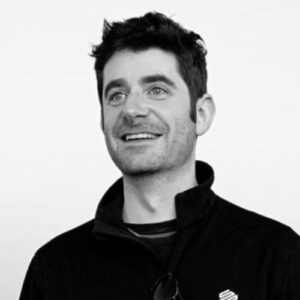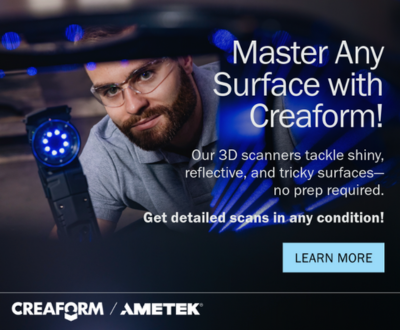Backflip Promises Groundbreaking Solution for AI-Generated 3D Models

Last December, Markforged cofounders Greg Mark and David Benhaim made headlines by launching their new startup, Backflip. What’s more, the company received $30 million in Series A funding. Given the pair’s astounding success with Markforged—a company that pioneered metal and carbon-fiber 3D printing technology, and now operates on all seven continents—it is no surprise that Backflip garnered attention. The new service is an artificial intelligence design tool that generates 3D models. And while there are other 3D model generators on the market, they often cannot generate models high-quality enough to print—at least not without heavy editing. Backflip, by contrast, differentiates itself by putting high functionality at the forefront, drawing upon years of experience in the additive manufacturing field. We spoke to Greg Mark to learn about how the startup developed and where it is heading.
3DN: Could you introduce us to Backflip? How did your experience founding Markforged influence Backflip’s development?

Greg Mark, Founder and CEO of Backflip
Backflip builds 3D AI models for the physical world, powering tools that enable designers and engineers to more easily translate their imagination into reality. Our first product is a web app that lets you take an idea—a drawing, a sketch, a photo, or some text, and in one click, and about one minute, turn it into a highly detailed 3D model that can then be manufactured by 3D printing. It’s a tool that really accelerates how you can communicate and iterate on your design ideas in 3D.
At my previous company, Markforged, we focused on innovating in the downstream of manufacturing, specifically developing 3D printing technology to make strong, durable parts faster by 3D printing carbon fiber and metal. I’m quite proud of the technology and business we built there; we created manufacturing infrastructure that changed how things are made in mission-critical, resource-constrained situations like on the space station or on nuclear submarines, not to mention thousands of traditional and advanced manufacturing companies around the world.
Between Markforged and Backflip, I took some time off to recharge and reflect. As I was thinking about the advances in manufacturing technology and the growth of service providers (both in additive manufacturing and traditional CNC machining), I realized that 3D design has now become the biggest barrier to enabling more people to create physical parts and products. Backflip came about to help accelerate and ease the journey of humans entering the world of 3D design. We’re focused on the ‘upstream’ of building physical things—design—and on changing the way that people go from idea to design to reality.
3DN: Backflip received $30M in funding and has a waitlist to use the platform. Could you tell us more about the response Backflip has received?
Speaking first about our investors, we are so grateful to have the support of world-class venture firms who both wrote the checks but also provided the sort of support and vision that money cannot buy. NEA and Andreessen Horowitz are peerless in bringing deep tech innovation to life and are sector-specific experts in AI who understand what we are building and why it will be transformative.
As far as the launch of the product itself—while we were ready for a surge in traffic and were optimistic it would resonate with creative folks, we weren’t quite expecting to have exponential daily traffic growth for two weeks in a row. I can say that the enormous outpouring of interest is something we are working hard to accommodate. Scaling our infrastructure to address demand has been a daily focus for us at the start of this year, and we have now started bringing people off the waitlist and opening our doors back up.
3DN: What sets Backflip apart from other 3D generators? How are you ensuring Backflip’s models can be optimized for 3D printing?
In terms of grading our own success, the only metric that my cofounder and I really care about is our impact on the world. Did we actually make it easier for our users to turn their imagination into reality? Are we making their lives and jobs easier? Are we actually unlocking the future we want to live in?
It’s not enough to be able to just make a 3D model—it needs to have sufficient detail and quality to match the needs of the users actually looking to us for a solution that empowers them. There are a lot of people building AI models out there, us included, but we’re really focused on building high-quality, and highly functional tools. An AI model can demonstrate something is possible, a tool gets used every day to create value for a user. We will have failed if all we do is help someone make a pretty model (although we’ve designed our tools to also create aesthetically beautiful parts too).
With that perspective in mind, we purpose-built a system to produce detailed, high-quality models—that also offer users control and editability to solve their challenges in a way that works for them. We drew upon our insight in design and engineering to create an AI-powered design process that is effective for professionals building real things.

A prompt generates a 3D model, which is then 3D printed.
In terms of technology, we’ve spent collective decades in the 3D printing and manufacturing space, so we intimately know the characteristics of parts that are manufacturable. We’ve leveraged that know-how to build the world’s largest synthetic data set to train the AI model that translates 2D images into 3D models—and it’s only growing every day. And as part of that, we’ve trained the AI model and built tools to create 3D models with characteristics that are conducive to being 3D printed, such as creating manifold meshes (no holes discontinuities in the mesh surface), just as one example.
3DN: Who is Backflip targeting?
Backflip is best understood as helping bring humanity faster into the future. Everyone has an imagination, but far fewer people can make their imagination real. At Backflip, we’re building for every inventor, designer, artist, engineer or creator who wants to design their future.
Getting a little more specific, we’re seeing people get really excited about where they can use our tools across a wide range of creative fields – from established manufacturers to designers building props, costumes and SFX for Hollywood, large toy manufacturers, CPG companies, interior designers, video game developers, and more. The use cases really depend on the industry—for some users without the skillset for existing 3D design tools, our app makes it easy for them to create end products in 3D for the first time. For professionals with more design experience, we’re seeing more use cases in early ideation, fast design iteration, and design communication before they move over to their existing tools for more detailed design.
One of the common themes we’re hearing from our users is that the Backflip app is really useful when a customer or client of theirs comes to them without a strong idea of exactly what they want. As an example, this happens in Hollywood SFX and props all the time—a producer requests a custom prop, but has no artwork or design direction to really offer. Backflip gives SFX and costume houses a tool to quickly workshop different ideas with their clients, without expending a ton of time and energy before they’ve agreed on a paid job.

Backflip helps users make their imagination a tangible reality.
3DN: What challenges has Backflip faced? Notably, given concerns about AI’s environmental impact, how are you addressing the software’s footprint?
One of the fun challenges in 3D design is that everyone has a different process—even within a single industry. When you zoom out further and compare the design processes and tools of industrial designers, digital sculptors and mechanical engineers (and technical folks with no prior 3D design experience), everyone has a starkly different perspective on what works best for them. We’ve tried to strike a balance by building really flexible tools that offer users lots of options for how they prefer to create. And we’re continuing to build in that area, it’s a big focus for us this year.
Regarding environmental impact, I don’t want to greenwash the issue, but we are much more efficient in the computing needed versus what we’ve seen from Large Language Models (LLMs), so we have much more efficient cost needs and a drastically reduced environmental impact. This comes from the fact that our technological process is convergent versus divergent, we know where we want to go in terms of the output, whereas LLMs are making educated guesses. Additionally, we’ve invented a novel neural representation that teaches AI to think in 3D, unlocking a new category of models. That development yields 60x more efficient training, 10x faster inference and 100x the spatial resolution of existing state-of-the-art methods. And we’re continuing to improve on these metrics as we work to make our infrastructure more efficient over time.
3DN: Any last words for our readers?
While we launched with a product that is already immediately transformative in a zero-to-one sense, this is just the beginning. We’re hard at work listening to our users and developing new features, and by the end of the year, we expect the company to have added a tremendous amount of new functionality and capability. If anyone reading wants to get in touch to help build the future, we’re hiring talented and driven folks to join us and would love for them to reach out—you can find our careers info on our website here.
What do you think of Backflip? Let us know in a comment below or on our LinkedIn, Facebook, and Twitter pages! Don’t forget to sign up for our free weekly Newsletter here, the latest 3D printing news straight to your inbox! You can also find all our videos on our YouTube channel.
*Cover image: A mug designed with AI assistance in Backflip and then 3D printed in copper. (All photo credits: Backflip)






